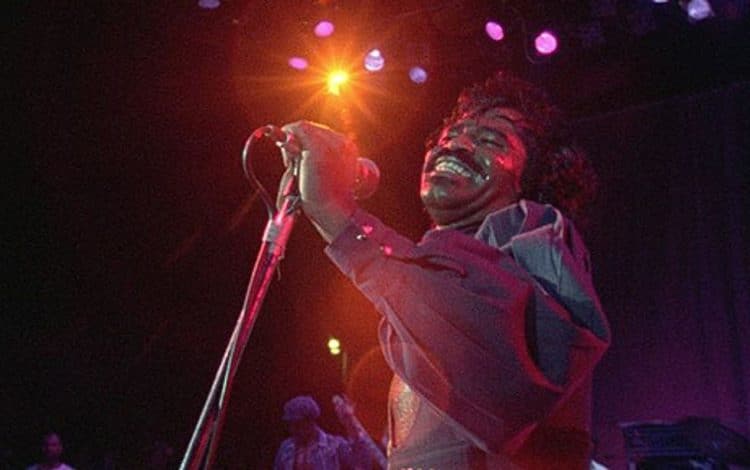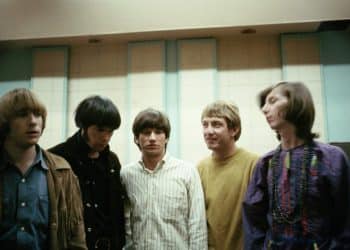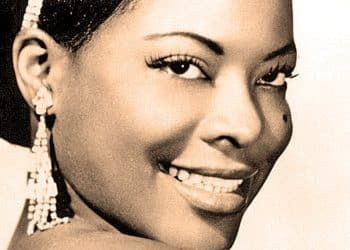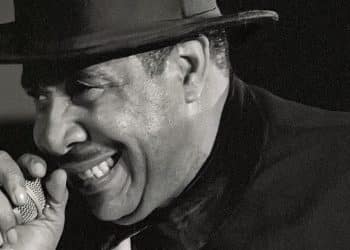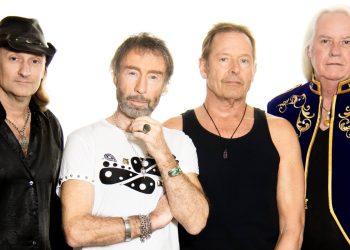Get ready to dive into the explosive world of funk, soul, and pure energy as we count down the top 10 most popular James Brown songs of all time! Known as the “Godfather of Soul” and the architect of funk, James Brown revolutionized music with his unparalleled stage presence, infectious grooves, and iconic scream that could light up any room. Over a career spanning more than five decades, Brown crafted countless hits that not only topped the charts but also laid the foundation for genres like hip-hop, R&B, and even rock. His influence can still be felt today, with modern artists continually sampling and paying homage to his trailblazing sound. From anthems of empowerment to foot-stomping dance tracks, Brown’s music transcended the boundaries of race and genre, uniting audiences with its universal appeal. Whether you’re a lifelong fan or new to his legendary discography, these songs will remind you why James Brown remains one of the most significant and electrifying musicians of all time. So get up, get on up, and let’s groove through the timeless classics that made James Brown a musical icon!
1. “I Got You (I Feel Good)” (1965)
Few songs are as instantly recognizable as James Brown’s “I Got You (I Feel Good).” Released in 1965, it features an explosive combination of horns, rhythm, and Brown’s electrifying vocals. The song is a joyous celebration of feeling on top of the world, with its signature refrain, “I feel good!” punctuating the track like a burst of energy. The tight, syncopated instrumentation drives the song forward, making it both danceable and undeniably infectious. As a crossover hit, it charted on both the R&B and pop charts, cementing Brown’s status as the “Godfather of Soul.” This song captures the essence of his live performances—raw, dynamic, and full of life. It’s no wonder this track remains a staple in his catalog and a timeless classic in popular music.
2. “Papa’s Got a Brand New Bag” (1965)
“Papa’s Got a Brand New Bag” is a pivotal track in music history, marking James Brown’s shift toward funk. Released in 1965, the song was revolutionary for its rhythm-centric approach. Brown’s vocals are almost secondary to the groove, which is driven by a tight horn section and syncopated drum patterns. The lyrics describe a man embracing a new, hip style, but the real star here is the music itself. Brown’s vocal stabs and shouts serve as rhythmic instruments, foreshadowing the funk-heavy sound that would dominate his later work. The song earned him his first Grammy Award and is frequently cited as one of the key tracks that helped shape the funk genre. It was a seismic shift in Brown’s career, and in music more broadly.
3. “It’s a Man’s Man’s Man’s World” (1966)
Released in 1966, “It’s a Man’s Man’s Man’s World” is one of James Brown’s most emotionally charged and soulful performances. The song’s sweeping orchestration, featuring lush strings and brass, sets the stage for Brown’s impassioned vocals. The lyrics explore themes of male dominance in the world but acknowledge the indispensable role of women, making it both powerful and introspective. Brown’s delivery is raw and heartfelt, filled with his signature grunts and vocal modulations that add layers of emotion to every line. This track stands out in his discography for its vulnerability and profound social commentary. While many of Brown’s songs are upbeat and funky, this ballad proves his versatility and his ability to convey deep emotion through music.
4. “Sex Machine” (1970)
“Sex Machine” is the epitome of funk, and its 1970 release solidified James Brown’s position as a musical innovator. Featuring the explosive opening line “Get up, get on up,” the track is driven by an infectious groove that refuses to let go. The song is minimalistic in its structure, focusing on rhythm and repetition, with Brown’s vocals acting as another instrument in the ensemble. The interplay between the guitar, bass, and drums creates a hypnotic groove that invites listeners to move. This track showcases Brown’s ability to lead his band with precision, keeping the energy high throughout its nearly 11-minute runtime. “Sex Machine” became a defining song of the funk genre and has been heavily sampled in hip-hop and other modern music.
5. “Super Bad” (1970)
When James Brown released “Super Bad” in 1970, he was already a towering figure in the world of funk, but this song took things to a new level. Clocking in at over nine minutes, the track is a masterclass in groove, with its tight bassline, sharp horns, and relentless rhythm. Brown’s vocal delivery is as energetic as ever, mixing spoken-word sections with his signature grunts and screams. Lyrically, the song is a boastful declaration of Brown’s prowess, both musically and personally. The extended instrumental breaks give his band, The J.B.’s, plenty of space to shine, showcasing their tight musicianship. “Super Bad” wasn’t just a hit on the R&B charts—it also became a cornerstone of Brown’s live performances, where his incredible stamina and energy could fully shine.
6. “Get Up Offa That Thing” (1976)
Released in 1976, “Get Up Offa That Thing” is an electrifying call to action. The song is one of Brown’s most high-energy tracks, encouraging listeners to dance their troubles away. With its infectious groove, driven by punchy horns and a tight rhythm section, it’s nearly impossible to sit still while listening. Brown’s vocal performance is, as always, dynamic, as he alternates between singing, shouting, and interacting with the audience. The track is pure funk, designed to get people moving, and it quickly became a staple in his live shows. Despite being released later in his career, “Get Up Offa That Thing” shows that James Brown never lost his ability to ignite a crowd, making it one of his most enduring hits.
7. “Cold Sweat” (1967)
Released in 1967, “Cold Sweat” is widely regarded as one of the first true funk songs. Breaking away from traditional song structures, Brown and his band focused on rhythm and groove, with the horns and drums playing off each other in complex, syncopated patterns. Brown’s vocal delivery is more restrained, allowing the instrumental interplay to take center stage. The track is grounded by a relentless groove that simmers beneath Brown’s cool, understated performance. “Cold Sweat” was groundbreaking for its time, pushing the boundaries of soul and R&B into new, uncharted territories. It laid the foundation for the funk genre that Brown would continue to pioneer in the years to come.
8. “The Payback” (1973)
“The Payback,” released in 1973, is a slow-burning, revenge-fueled anthem that redefined funk. Its laid-back, yet menacing groove contrasts with the fiery emotion in Brown’s voice as he sings about betrayal and retribution. Clocking in at over seven minutes, the track gives plenty of space for the rhythm section to lock into a hypnotic groove, with Brown’s vocals weaving in and out. The song’s minimalistic arrangement, with its steady bassline and sparse guitar licks, highlights the power of repetition and rhythm in funk. “The Payback” became one of Brown’s most sampled tracks, particularly in the world of hip-hop, and remains a testament to his ability to convey raw emotion through music.
9. “Please, Please, Please” (1956)
“Please, Please, Please” was the song that launched James Brown’s career, released in 1956. It is a pleading, emotional ballad that showcases Brown’s raw vocal talent. The song’s repetitive, almost hypnotic structure, with Brown begging for his lover to stay, is filled with passion and heartbreak. This early R&B hit is a far cry from the funk sound Brown would later pioneer, but it laid the groundwork for his expressive, commanding vocal style. “Please, Please, Please” introduced the world to James Brown’s unique talent and became a blueprint for the emotional intensity that would define much of his later work. Even in his early days, Brown knew how to captivate an audience.
10. “Say It Loud – I’m Black and I’m Proud” (1968)
In 1968, James Brown released “Say It Loud – I’m Black and I’m Proud,” an unapologetic anthem of black empowerment during the height of the Civil Rights Movement. The song’s message was clear: pride in black identity and a call for social justice. Musically, it’s driven by a funky bassline and a call-and-response chorus, with Brown’s vocals leading the charge. The song resonated deeply with African Americans at the time, becoming a soundtrack for the struggle for equality. Its powerful message, combined with its infectious groove, made it a chart-topping hit. Even decades later, “Say It Loud” remains a cultural touchstone and one of the most important songs in Brown’s discography.
